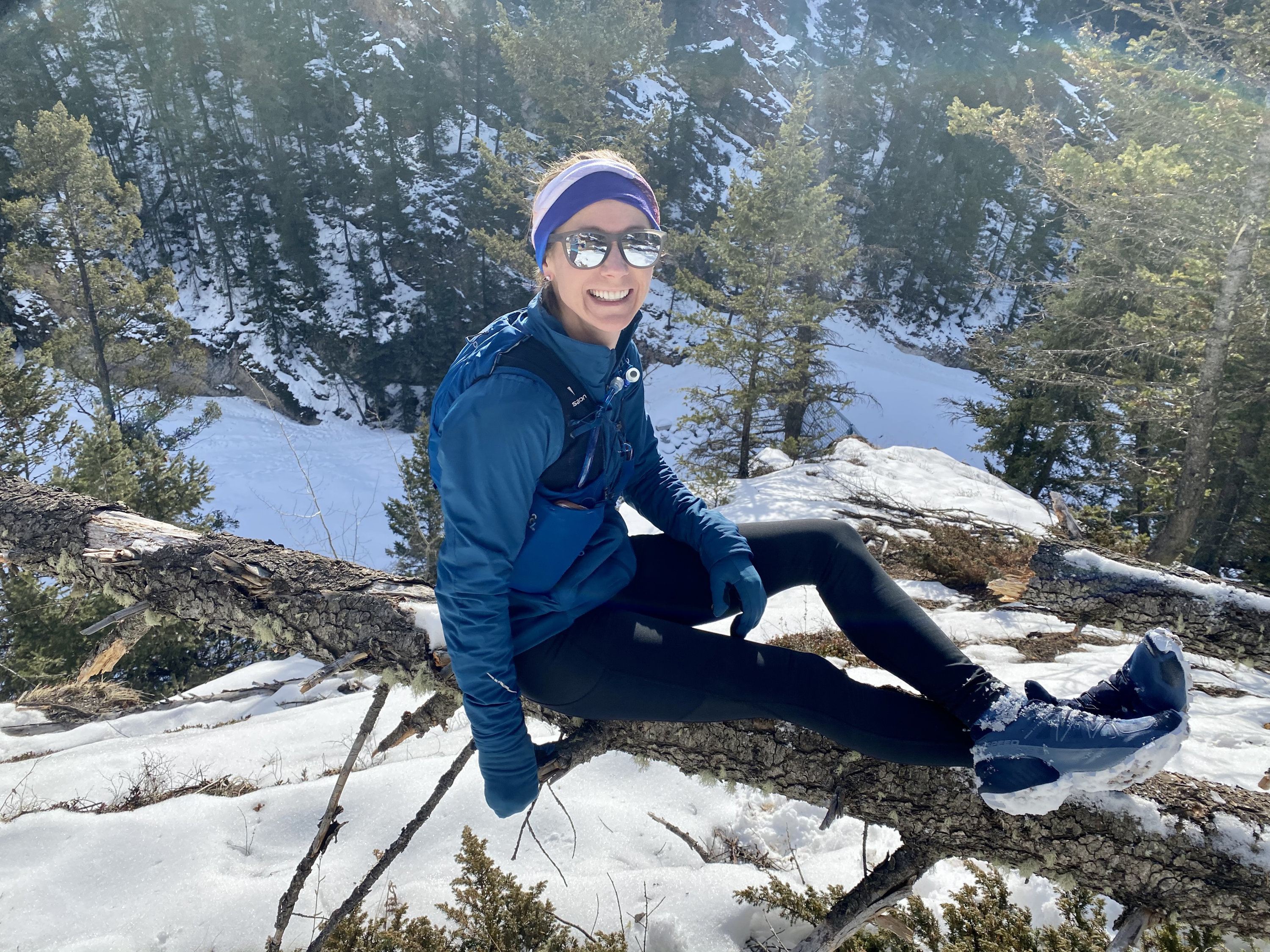The journey to Everest: ‘Small steps can make a huge difference’
Shirley Wilfong-Pritchard - 26 April 2022

Distinguished Researcher Kate Storey rests after training in the mountains.
It’s 8 a.m. and Kate Storey is setting up her laptop inside an altitude chamber to do a little work while her body acclimatizes to 5,000 metres. The next two and a half hours will be spent on a bike, first with some initial spinning, then working up to a more intense workout with intervals. She wears a monitor the whole time to record heart rate and blood oxygen levels against measured and perceived exertion. She is preparing to run the Mount Everest Marathon.
When Storey—an associate professor with the University of Alberta’s School of Public Health, CIHR/PHAC Applied Public Health Chair, Stollery Science Lab Distinguished Researcher, mom and self-described athletic adventurer—runs the Mount Everest marathon on May 29, there will be more than her personal best at stake. She’s running to help fulfil a friend’s dream and raise money for the Stollery Children’s Hospital Foundation.
Storey launched her plan after her good friend Leanna Carriere’s brother-in-law died while descending Mount Everest. Among his last words, he said he wanted to run the Everest Marathon. When Carriere and her sister said they were going to run it in his memory and asked Storey if she was up for the adventure, she was glad to join them.
“It was their story initially that brought me in,” she says. “But then it became a journey—a journey for all of us together and a story of friendships and running and adventure and challenge.”
Storey and Carriere leave Edmonton on May 12 and arrive two days later in Kathmandu, Nepal. Then it’s a short flight to Lukla, said to be one of the most dangerous airports in the world due to its short runway, harsh geography and unpredictable weather extremes.
After a 10-day trek to base camp, the runners have one day to rest before the 42.195-kilometre marathon, which celebrates the successful ascent of Mount Everest by Tenzing Norgay Sherpa and Sir Edmund Hillary on May 29, 1953. The race, which should take between seven and eight hours to complete, begins at base camp, at an altitude of 5,356 metres, and crisscrosses the high Sherpa trails of Khumbu valley, eventually descending into the town of Namche Bazaar.
The run was postponed for two years because of COVID, but that’s given Storey additional time to train and build her own support network. She is working with Seana Minnett, sport and exercise medicine physician at the Glen Sather Sports Medicine Clinic and Michael Kennedy, Kinesiology, Sport, and Recreation professor and certified exercise physiologist, to ensure that she is physically—and mentally—ready for the run.
It was Kennedy who suggested the altitude chamber at his Athlete Health Lab to measure Storey’s responses, help her understand her cardiovascular response (heart rate and oxygen delivery to muscles) and map out a race strategy to avoid any surprises on the mountain.
Kennedy, who directed the physical preparation of four researchers who scaled Mount Logan in 2020 to drill ice core samples, also wanted to ensure that Storey and Carriere had no acute mountain sickness symptoms.
“Completing these altitude exercise training sessions allows us to understand the combination effect that exercise at severe altitude has on their well-trained bodies,” Kennedy explained. “Sometimes it's hard to believe that across the thin plastic walls Kate’s body feels like she is at Everest base camp, but she’s still in Edmonton!”
Storey’s been doing her own specialized training as well. She completed an ultra marathon in Canmore last fall and a half-marathon in Vancouver this winter and continues to run or cycle everywhere. Storey says her best thinking is done while running.
“If I'm writing a grant, or I'm working through a problem, or I'm just overwhelmed, I'll go on a run and clarity just happens.”
There’s also weight training for strength, Pilates, stretching and stairs—lots of stairs.
“It certainly takes a lot of my time and energy. And there are many, many Zoom calls when I'm on a bike or I take a call while I'm running to try to fit it all in. Or, I’ll invite someone on a walk with me or to do stairs to sneak in a meeting.”
Her decision to run has had an inspiring effect on her team at the SIRCLE Research Lab: Settings-based Intervention Research through Changes in Lifestyles & Environments, which aims to create wellness-supporting environments for kids, their families and their communities.
“I have a really great team that is part of my research lab. Since COVID, everyone’s been at home, so I wanted to find a way to come together as a team and do something fun collectively.”
Together, Storey and her team created Running in SIRCLEs for Stollery to raise funds for the Million Reasons Run. They will be running all of May with Storey bringing it home by running on Everest at the end of the month.
Today, as she enters the final phase of preparation for Everest, Storey offers this advice to anyone wanting to challenge themselves.
“Take that first step, whatever that means. Build your support network, and start small. We need to celebrate those small steps because they are often the hardest. From a running standpoint, it is one step at a time—just lacing up the shoes and going outside. Small steps can make a huge difference.”